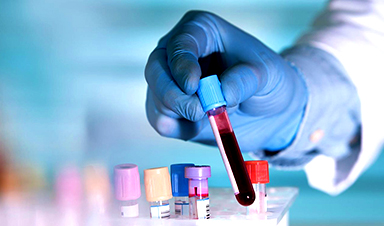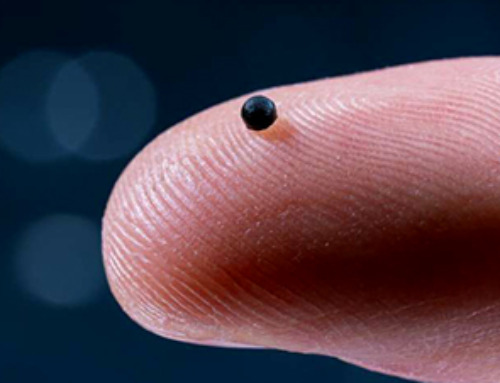Mass General Brigham's HPV-DeepSeek test enables much earlier cancer detection through a blood sample, creating a new opportunity for screening HPV-related head and neck cancers.
Human papillomavirus (HPV) is responsible for about 70% of head and neck cancers in the United States, making it the most common type of cancer linked to the virus. Rates of these cancers continue to rise each year. Unlike HPV-related cervical cancers, which have established screening options, there is currently no test to detect HPV-associated head and neck cancers.
As a result, most cases are diagnosed only after tumors have already expanded to billions of cells, causing symptoms and often spreading to nearby lymph nodes. Developing screening tools that can identify these cancers much earlier would allow patients to begin treatment sooner and improve outcomes.
Detecting cancer years before symptoms
In a newly funded federal study published in the Journal of the National Cancer Institute, researchers at Mass General Brigham demonstrated that their liquid biopsy test, called HPV-DeepSeek, can detect HPV-related head and neck cancers as early as 10 years before symptoms develop. According to the study's authors, diagnosing these cancers earlier could increase treatment success rates and reduce the need for aggressive therapies.
"Our study shows for the first time that we can accurately detect HPV-associated cancers in asymptomatic individuals many years before they are ever diagnosed with cancer," said lead study author Daniel L. Faden, MD, FACS, a head and neck surgical oncologist and principal investigator in the Mike Toth Head and Neck Cancer Research Center at Mass Eye and Ear, a member of the Mass General Brigham healthcare system.
"By the time patients enter our clinics with symptoms from the cancer, they require treatments that cause significant, life-long side effects. We hope tools like HPV-DeepSeek will allow us to catch these cancers at their very earliest stages, which ultimately can improve patient outcomes and quality of life."
How HPV-DeepSeek works
HPV-DeepSeek relies on whole-genome sequencing to identify tiny fragments of HPV DNA that separate from tumors and circulate in the blood. Earlier studies by the same research group demonstrated that the test could reach 99% specificity and 99% sensitivity in diagnosing cancer at a patient's initial clinic visit, performing better than existing diagnostic approaches.
To determine whether HPV-DeepSeek could detect HPV-associated head and neck cancer long before diagnosis, researchers tested 56 samples from the Mass General Brigham Biobank: 28 from individuals who went on to develop HPV-associated head and neck cancer years later, and 28 from healthy controls.
HPV-DeepSeek detected HPV tumor DNA in 22 out of 28 blood samples from patients who later developed the cancer, whereas all 28 control samples tested negative, indicating that the test is highly specific. The test was better able to detect HPV DNA in blood samples that were collected closer to the time of the patients' diagnosis, and the earliest positive result was for a blood sample collected 7.8 years prior to diagnosis.
Using machine learning, the researchers were able to improve the test's power so that it accurately identified 27 out of 28 cancer cases, including samples collected up to 10 years prior to diagnosis.
The authors are now validating these findings in a second blinded study funded by the National Institutes of Health (NIH) using hundreds of samples collected as part of the Prostate, Lung, Colorectal, and Ovarian Cancer Screening Trial (PLCO) at the National Cancer Institute.
Reference: "Circulating tumor human papillomavirus DNA whole genome sequencing enables human papillomavirus-associated oropharynx cancer early detection" by Dipon Das, Shun Hirayama, Ling Aye, Michael E Bryan, Saskia Naegele, Brian Zhao, Vasileios Efthymiou, Julia Mendel, Adam S Fisch, Zoe Guan, Lea Kröller, Birgitta E Michels, Tim Waterboer, Jeremy D Richmon, Viktor Adalsteinsson, Michael S Lawrence, Matthew G Crowson, A John Iafrate and Daniel L Faden, 10 September 2025, JNCI: Journal of the National Cancer Institute.
DOI: 10.1093/jnci/djaf249
Funding for this work came from the National Institute of Dental and Craniofacial Research (NIDCR) of the National Institutes of Health (NIH), grant no. R03DE030550.
Faden receives salary support from NIH/NIDCR K23 DE029811, NIH/NIDCR R03 DE030550 and NIH/NCI R21 CA267152. He has also received research funding or in-kind funding from Bristol-Myers Squibb, Calico, Predicine, BostonGene, Neogenomics and Haystack (Quest), in addition to consulting fees from Merck, Noetic, Chrysalis Biomedical Advisors, Neogenomics, Arcadia, and Focus. None of these sources relate to the work in this manuscript. Waterboer serves on advisory boards for Merck (MSD) Sharp & Dohme. The remaining authors have declared no conflicts of interest.
News
Ultrasound-activated Nanoparticles Kill Liver Cancer and Activate Immune System
A new ultrasound-guided nanotherapy wipes out liver tumors while training the immune system to keep them from coming back. The study, published in Nano Today, introduces a biodegradable nanoparticle system that combines sonodynamic therapy and cell [...]
Magnetic nanoparticles that successfully navigate complex blood vessels may be ready for clinical trials
Every year, 12 million people worldwide suffer a stroke; many die or are permanently impaired. Currently, drugs are administered to dissolve the thrombus that blocks the blood vessel. These drugs spread throughout the entire [...]
Reviving Exhausted T Cells Sparks Powerful Cancer Tumor Elimination
Scientists have discovered how tumors secretly drain the energy from T cells—the immune system’s main cancer fighters—and how blocking that process can bring them back to life. The team found that cancer cells use [...]
Very low LDL-cholesterol correlates to fewer heart problems after stroke
Brigham and Women's Hospital's TIMI Study Group reports that in patients with prior ischemic stroke, very low achieved LDL-cholesterol correlated with fewer major adverse cardiovascular events and fewer recurrent strokes, without an apparent increase [...]
“Great Unified Microscope” Reveals Hidden Micro and Nano Worlds Inside Living Cells
University of Tokyo researchers have created a powerful new microscope that captures both forward- and back-scattered light at once, letting scientists see everything from large cell structures to tiny nanoscale particles in a single shot. Researchers [...]
Breakthrough Alzheimer’s Drug Has a Hidden Problem
Researchers in Japan found that although the Alzheimer’s drug lecanemab successfully removes amyloid plaques from the brain, it does not restore the brain’s waste-clearing system within the first few months of treatment. The study suggests that [...]
Concerning New Research Reveals Colon Cancer Is Skyrocketing in Adults Under 50
Colorectal cancer is striking younger adults at alarming rates, driven by lifestyle and genetic factors. Colorectal cancer (CRC) develops when abnormal cells grow uncontrollably in the colon or rectum, forming tumors that can eventually [...]
Scientists Discover a Natural, Non-Addictive Way To Block Pain That Could Replace Opioids
Scientists have discovered that the body can naturally dull pain through its own localized “benzodiazepine-like” peptides. A groundbreaking study led by a University of Leeds scientist has unveiled new insights into how the body manages pain, [...]
GLP-1 Drugs Like Ozempic Work, but New Research Reveals a Major Catch
Three new Cochrane reviews find evidence that GLP-1 drugs lead to clinically meaningful weight loss, though industry-funded studies raise concerns. Three new reviews from Cochrane have found that GLP-1 medications can lead to significant [...]
How a Palm-Sized Laser Could Change Medicine and Manufacturing
Researchers have developed an innovative and versatile system designed for a new generation of short-pulse lasers. Lasers that produce extremely short bursts of light are known for their remarkable precision, making them indispensable tools [...]
New nanoparticles stimulate the immune system to attack ovarian tumors
Cancer immunotherapy, which uses drugs that stimulate the body’s immune cells to attack tumors, is a promising approach to treating many types of cancer. However, it doesn’t work well for some tumors, including ovarian [...]
New Drug Kills Cancer 20,000x More Effectively With No Detectable Side Effects
By restructuring a common chemotherapy drug, scientists increased its potency by 20,000 times. In a significant step forward for cancer therapy, researchers at Northwestern University have redesigned the molecular structure of a well-known chemotherapy drug, greatly [...]
Lipid nanoparticles discovered that can deliver mRNA directly into heart muscle cells
Cardiovascular disease continues to be the leading cause of death worldwide. But advances in heart-failure therapeutics have stalled, largely due to the difficulty of delivering treatments at the cellular level. Now, a UC Berkeley-led [...]
The basic mechanisms of visual attention emerged over 500 million years ago, study suggests
The brain does not need its sophisticated cortex to interpret the visual world. A new study published in PLOS Biology demonstrates that a much older structure, the superior colliculus, contains the necessary circuitry to perform the [...]
AI Is Overheating. This New Technology Could Be the Fix
Engineers have developed a passive evaporative cooling membrane that dramatically improves heat removal for electronics and data centers Engineers at the University of California San Diego have created an innovative cooling system designed to greatly enhance [...]
New nanomedicine wipes out leukemia in animal study
In a promising advance for cancer treatment, Northwestern University scientists have re-engineered the molecular structure of a common chemotherapy drug, making it dramatically more soluble and effective and less toxic. In the new study, [...]





















